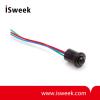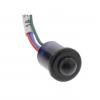LLE Series Liquid Level Sensors - LLE105100
• Repeatability: ±1mm
• Hysteresis: 2mm (dependent on liquid)
• Material: Polysulphone
• Operating temperature: -40 to 125°C (-40°F to 257°F)
• Storage temperature: -40 to 125°C (-40°F to 257°F)
• Supply voltage: 5 Vdc to 12 Vdc
• Supply current: 5 mA nominal @ +5 Vdc
- Quantity:
- - +
Product Specification
LLE Series Liquid Level Sensors Description
The enhanced series of liquid level sensors incorporates a photo-transistor trigger which provides a digital output that denotes the presence or absence of liquid.
The mode of operation is derived from the principle of total internal reflection. An LED and photo-transistor are housed within a plastic dome at the head of the device. When no liquid is present, light from the LED is internally reflected from the dome to the photo-transistor. When liquid covers the dome, the effective refractive index at the dome-liquid boundary changes, allowing some light from the LED to escape. Thus the amount of light received by the photo- transistor is reduced and the output switches, indicating the presence of liquid. This method of liquid level sensing is very fast, and almost instantaneous for water.
LLE Series Liquid Level Sensors Features
• Solid state technology
• Small size
• Digital output
• Pre-wired
• Electrically robust
LLE Series Liquid Level Sensors Benefits
• Accurate, repeatable switching point
• Can be mounted in applications where space is limited
• Microprocessor compatible
• Easy to install, saving assembly time
• Reverse polarity, over voltage, short circuit and transient protection
LLE Series Liquid Level Sensors Typical Applications
• Home appliances
• Spa baths
• Vending machines
• Food and beverage
• Medical
• Compressors
• Machine tools
• Automotive
LLE Series Liquid Level Sensors Order Guide
|
|
Catalogue Listing |
||
|
Description |
|
Standard temperature |
High temperature |
|
Screw In, M12 Thread, Plastic |
(Type 1) |
LLE101000 |
LLE101101 |
|
(Type 2) |
LLE102000 |
LLE102101 |
|
|
(Type 3) |
LLE103000 |
LLE103101 |
|
|
Plus In, Plastic |
(Type 5) |
LLE105000 |
LLE105100 |
|
Screw In,½ In, Plastic |
Nickel plated brass |
LLE205000 |
LLE205100 |
|
Stainless Steel |
LLE305000 |
LLE305100 | |
LLE Series Liquid Level Sensors Technical Specifications
|
Specifications |
|
|
| Operation mode |
User defined single point on/off switch (Output is high in air) |
|
|
Repeatability (mm) |
±1 |
|
|
Hysteresis (mm) |
2 (dependent on liquid) |
|
|
Response time |
Rising liquid level - 50 μs
Falling liquid level - 1 s max (in ethanol)
Response in other liquids dependent on viscosity
|
|
|
Mechanical |
|
|
|
Mounting |
Type 1 and 2 - mounted from outside; Type 3 and 5 - mounted from inside |
|
|
Termination |
250 mm flying leads (180 mm for metal versions) |
|
|
Blue 0 V |
||
|
Red +5 V to +12 V supply |
||
|
Green Output |
||
|
Material [Note 1] |
Polysulphone |
|
|
Dimensions Dome Thread Hex |
Plastic
LLE101/102/103 Series
|
Metal
LLE205/305 Series
|
|
3,5 mm radius (includes LLE105 Series) |
||
|
M12x1 |
½ BSPT |
|
|
19 mm |
24 mm |
|
|
Environmental |
Standard temperature |
High temperature |
|
Operating temperature (°C) |
-25 to 80 (-13°F to 176°F) |
-40 to 125 (-40°F to 257°F) |
|
Storage temperature (°C) |
-30 to 85 (-22°F to 185°F) |
-40 to 125 (-40°F to 257°F) |
|
Thermal testing |
As per BS EN60068-2-33 |
|
|
Humidity |
As per BS EN60068-2-30 |
|
|
Vibration |
As per BS EN60068-2-6 Part S3: 1996 |
|
|
Mechanical shock |
As per BS EN60068-2-27 Part 2 Ea: 1987 |
|
|
Pressure range (bar) |
0 to 5 (plastic housing) [Note 2]
0 to 25 (metal housing)
|
|
|
Ambient IR light limit (@ 940 nm) [Note 3] |
10 mW/cm in operation |
|
|
Electrical |
Standard temperature |
High temperature |
|
Supply voltage (Vcc) |
+5 Vdc to +12 Vdc ± 5 % |
|
|
Supply current (mA) |
15 mA nominal @ +5 Vdc |
5 mA nominal @ +5 Vdc |
|
Output sink current [Note 4] @ 5 Vdc supply |
@ 25°C 10 mA max. |
@ 25°C 40 mA max. |
|
@ 80°C 3 mA max. |
@ 125°C 7 mA max. |
|
Notes:
[Note 1] Material compatibility information available on request.
[Note 2] Threaded sensors only.
[Note 3] For other ambient light environments the user should test the sensor under application conditions to verify compatibility.
[Note 4] The output is intended as a TTL compatible output signal, for interfacing to logic systems. For interfacing with other types of circuitry an appropriate buffer circuit must be used.
If you cannot find what you want, you can entrust OFweek to source for you. Just click:
Sourcing ServiceRecommended Products
-
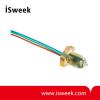
Optomax Digital Series Liquid Level Sensors
-
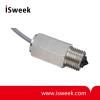
High Performance Liquid Level Sensors
-
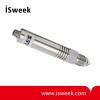
POS Glass Tip Range of Liquid Level Switches
-
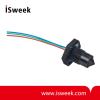
Optomax Basic Series Liquid Level Sensors
-
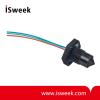
Optomax Digital Series Liquid Level Sensors
-
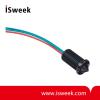
Optomax Digital Series Liquid Level Sensors
-
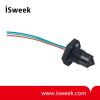
Optomax Digital Series Liquid Level Sensors
-
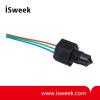
Optomax Industrial Series Optical Liquid Level Sensors
-
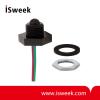
LLE Series Liquid Level Sensors
-
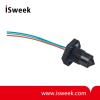
Optomax Digital Series Liquid Level Sensors








